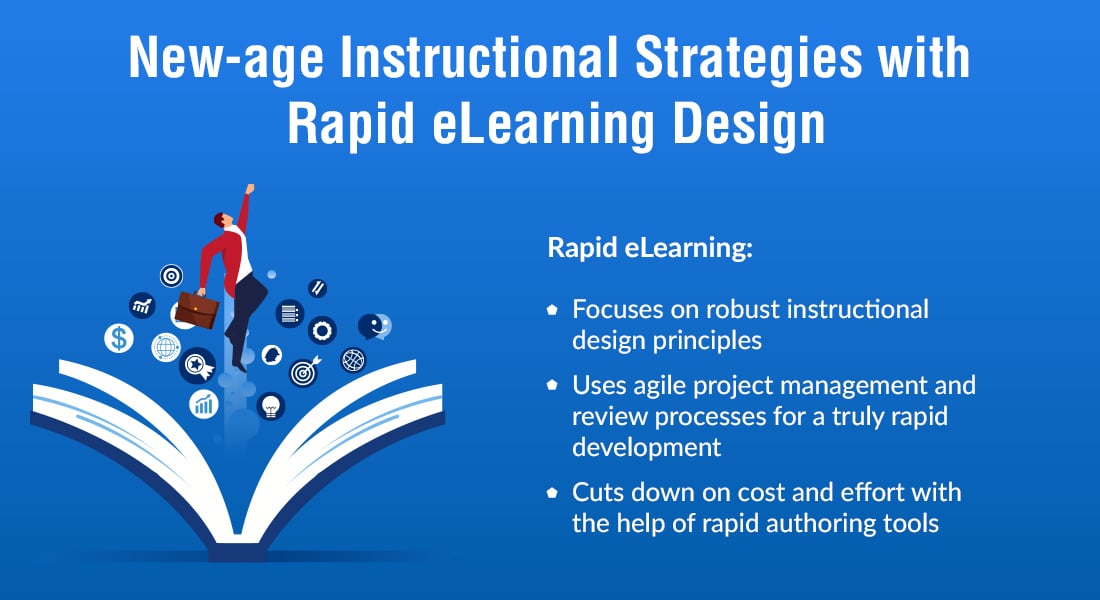Top 9 Fundamentals and Principles of eLearning Design and Development

ELearning has become an essential tool for corporates to train their employees. The flexibility and scalability of eLearning programs make them an attractive option for corporations looking to enhance their workforce’s skills and knowledge. eLearning offers several benefits, such as cost-effectiveness, flexibility, and scalability. However, for corporates to design effective eLearning programs, they need to understand the fundamentals and principles of eLearning design and development. This blog will help you understand these fundamentals and principles in detail so that you can get started with eLearning right off the bat.
Curious to Explore Various Fundamentals and Principles of eLearning Design and Development?
Some of the crucial ones are:
- Learning Objectives
- Instructional Design
- Personalization
- Feedback
Read on to explore the rest of them.
Top 9 Fundamentals and Principles of eLearning Design and Development
1. Needs Analysis
The first step in designing an effective eLearning program is to identify the learning needs of the employees. Corporates must conduct a thorough needs analysis to determine the training requirements of their workforce. The needs analysis should consider factors such as job roles, skill levels, and performance gaps.
2. Learning Objectives
Once the training requirements are identified, the next step is to establish clear learning objectives. Learning objectives are specific and measurable outcomes that learners are expected to achieve after completing the eLearning program. Learning objectives provide focus and direction for the eLearning program and help organizations design learner-centric training modules.
3. Instructional Design
Instructional design is the process of creating a structured and organized eLearning program. It involves determining the content, developing the course structure, and selecting the appropriate instructional strategies and technologies. Instructional design is critical to the success of the eLearning program. Some of the most effective strategies for modern learners are gamification, scenario-based learning, simulations, and microlearning.
→ Download eBook Now: Instructional Design Strategies
4. Engaging Content
One of the key principles of eLearning design and development is to create engaging content that captures the attention of the learners. Engaging content includes text, images, videos, animations, and interactive elements such as games and simulations. The content should be relevant, interesting, and easy to understand. Almost all modern eLearning authoring tools come with a lot of options, features, and a huge asset repository to make things quick and easy for you.
5. Personalization
Another important principle of eLearning is personalization. Personalization involves customizing the eLearning program to the individual needs of the learner. Personalization can be achieved by providing learners with options for content, pacing, and assessment. Usually, LXPs and all the modern LMS platforms come with certain AI features that can personalize the course for the learners as per their requirements and interests.
6. Interactivity
Interactivity is a critical component of eLearning design and development because it helps the organization create modules where learners can stay hooked till the end. Interactivity involves engaging learners in the learning process through activities such as quizzes, polls, and interactive scenarios. Interactivity helps learners to retain information and apply it in real-world situations.
7. Review and Feedback
Review and Feedback is essential for any organization because it helps them understand the relevancy of courses, and various potential issues (both technical and conceptual), and identify areas for improvement. All the stakeholders, SMEs, and other team members can provide their reviews with the help of various online review tools. Feedback can be received from learners through assessments, quizzes, and forms. For example, organizations can add a rating and an optional review tab or maybe hosting a small survey after the course ends.
8. Assessment and Evaluation
Assessment and evaluation are critical components of eLearning because they measure the learners’ knowledge and understanding of the content and the effectiveness of the eLearning program in achieving its objectives. Assessment and evaluation help to ensure that the eLearning program is meeting the needs of the learners and the organization at the same time.
9. Continuous Improvement
Continuous improvement involves monitoring the eLearning program’s effectiveness and making changes to improve it. Advanced learning analytics can help organizations track the learners’ activities and collect any sort of data and statistics to measure the program’s credibility. Continuous improvement helps to ensure that the eLearning program remains relevant and effective over time.
Wrapping Up!
Understanding the fundamentals and principles of eLearning design and development for corporates is essential to design effective eLearning programs. By considering aspects such as learning objectives, instructional design, interactivity, and continuous improvement, corporations can create eLearning programs that enhance their workforce’s skills and knowledge. So, are you ready to design interactive and engaging eLearning courses? If yes, then you should definitely check out our free eBook and explore the latest eLearning trends for 2023 to stay ahead of the curve. Grab it now!





